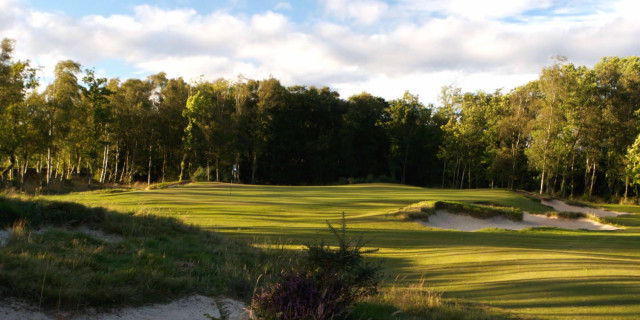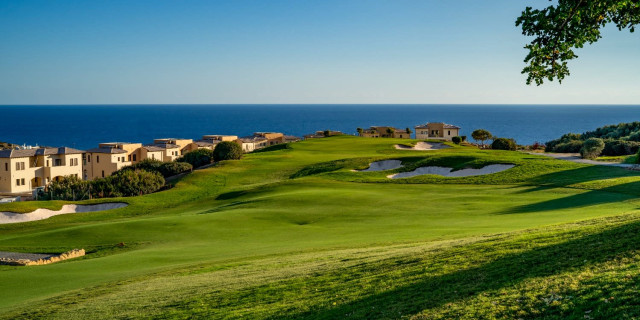Ten of the Best Courses in Fife
THERE is far more to Fife than St Andrews, the home of golf. Yes, the old town boasts more than enough courses on its own to keep most visitors to the county happy enough, and no trip to this part of the world is complete without going to the Old Course, whether to play it or simply to look at the links and imagine all the legends who have trodden the historic turf. But almost every village in Fife boasts a golf course of its own, and there are some classic courses, a mix of links and parkland. It is a stunningly beautiful county containing some of the most beautiful countryside to be found anywhere in Scotland. Here, we offer you ten of the best golf courses in Fife.
Old Course, St Andrews
6,721 yards, par 72, links
Green fee £175
The Old Course is the famous links on the planet. There are those who will tell you that it should be taken out into the North Sea and sunk but they know nothing about the history and tradition of the game. Many people will tell you that the Old Course is not even the best golf course in St Andrews, and they may have a point. But how can anybody stand on the first tee and fail to be impressed with the magnificent vista? And how can anybody walk down the first, 17th and 18th holes and not stop to think for a moment of all the greats who have been there before them? The opening hole is a simple enough affair, as long as you can stop your knees knocking. There is plenty of room on the left, but try to keep your opening drive down the right for the easiest approach to a large green located on the other side of the Swilcan Burn. The 17th, the Road Hole, is one of the most famous in golf. You drive over the corner of the Old Course Hotel and are then faced with a brutal second shot to a narrow green guarded by the Road Hole bunker in front and with the road running behind. Just try stopping your second shot on the putting surface. Best to play it as a par five, and that means hitting your second shot to the right to open up the green. The 18th hole features what is surely the widest fairway known to man but here's the beauty of the Old Course - there is out of bounds tight on the right and acres of space on the left, but the best line to the green is down the right side. Make sure you find the green with your second shot or else you will be playing your third from the Valley of Sin, and you could be there all day
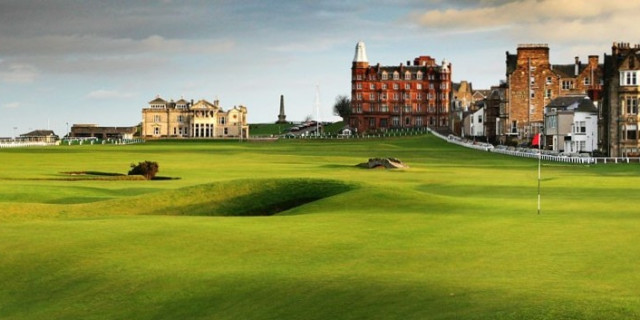
Kingsbarns
7,227 yards, par 72, links
Green fee £240
Located on a magnificent piece of real estate, with several holes running alongside the sea, Kingsbarns feels like it has been there for hundreds of years, but it is a relatively recent creation. It was opened in 2000 and it is a fabulous course, offering breathtaking views and some seriously challenging holes. The par-five 12th hole is a cracker. It measures 606 yards, with the beach running all the way down the left. Hit your drive to the right, allowing the slope to work the ball into the centre. Take care with your approach because the green is 70 yards long and features a pot bunker at the back.The 15th is a par-three measures 207 yards. A breathtaking short hole, there are bunkers to the left of a narrow green, with any shot to the right of the putting surface likely to end up among the rocks on the beach. The 18th is a magnificent closing hole that measures 444 yards and plays slightly uphill. The ideal drive should be long and to the left to set you up for an approach to a green that is guarded by a huge bank. If you find the surface, try to keep the ball below the hole.
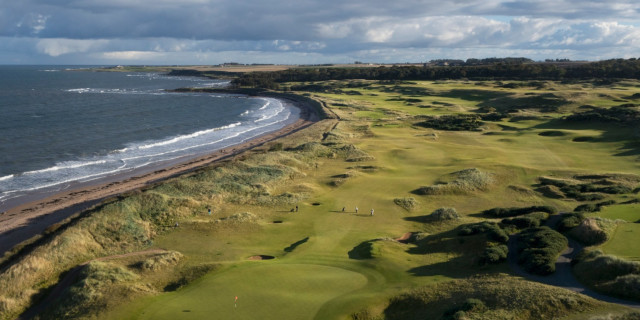
Lundin Links
6,371 yards, par 71, links
Green fee £65
A wonderful course that is a unique mix of links and parkland and offers a terrific challenge. No matter what time of year you play here there will be a wind blowing in from the North Sea. The fourth is a 411 yard par four demanding an arrow-straight drive as the fairway falls off left and right. The approach is to a slightly raised green guarded by a stream and a couple of bunkers. The fifth hole is a great par three. It measures just 141 yards but is guarded by seven bunkers, a stream and gorse. The ninth hole measures 555 yards. There are six bunkers to the left and trees and out of bounds on the right. The green slopes severely from right to left. The 12th measures 146 yards and plays uphill, so take at least one more club than you think you require. The final hole measures 439 yards. Take aim at the professional's shop to the right of the green and the ball will find its way to the middle. The green is long and narrow.
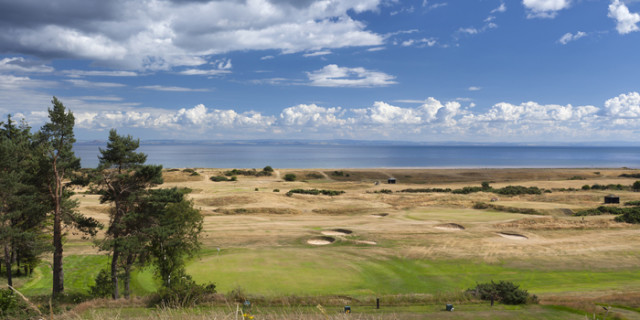
Elie
6,273 yards, par 70, links
Green fee £77
Elie is a gem - none other than five-time Open champion Peter Thomson said so, and he is absolutely correct. It may not be especially long, but it is still a magnificent test and features many stunning holes. The first is a 420-tard par four. It is played from the shadow of the submarine periscope that towers over the starter’s hut, the blind drive over the hill must avoid out of bounds and bunkers on the right. Depending on the strength of the wind you will need anything from a mid-iron to a driver to reach the green at the 214-yard third hole. Short and wayward shots will be swallowed up by well-placed bunkers right and left, while there is out of bounds to contend with over the back of this heavily contoured green. The 380-yard 13th runs alongside the sea. The ideal drive is to the right centre on the fairway, leaving a second shot to the wide and narrow raised green that rests underneath the steep cliffs behind. The approach must be carried all the way if you do not want to end up in the hollow that lies in front. the 389-yard final hole is fraught with danger, with out of bounds on the right side and bunkers right and centre. Once safely on the plateau beyond, two cross-fairway bunkers then sit 50 yards in front of the large green. A little hollow at the front edge will gather up anything short, while the fence at the back marks out of bounds..
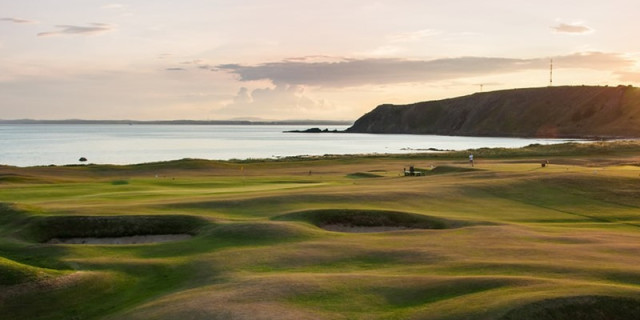
Ladybank
6,580 yards, par 71, heathland
Green fee £65
Ladybank is a course that demands accuracy from the tee, with thick rough, heather, pine trees and silver birch waiting to gobble up anything that goes astray. The second measures 567 yards and is a proper par five. It is a tight driving hole and out of bounds runs the whole way down the right side of the fairway. The decision on the second shot depends on how brave you feel - keeping the ball on the right half of the fairway allows the best approach to the green for your third shot – but it takes you close to the bunkers and the out of bounds. Favouring the left half of the fairway will leave a harder approach to the green but is safer. A two-tier green slopes from back to front. The eighth is 178 yards. Trees and a group of bunkers guard this small green. Try not to miss the left side of the green - it slopes away and you are coming in over a bunker. The 13th is 528 yards. Two bunkers, one behind the other, on the left side can be carried by big hitters, but most will aim for the right half of the fairway. The key is to avoid the bunkers left and right awaiting a wayward second shot. The final hole is a 438-yard par four. You have to carry some wild terrain. The perfect line is the large birch tree on the right-hand side of the fairway. A bunker sits in the middle of the fairway 40 yards from a large, flat green.
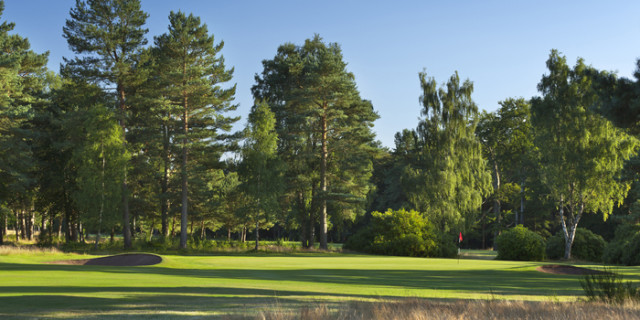
New Course, St Andrews
6,625 yards, par 71, links
Green fee £75
So here is just one of the courses in the Auld Grey Toon that many pundits reckon is a better test than the Old Course. Despite the name, it opened in 1895 and was designed by Tom Morris. It is a very different test from the Old Course. The second hole is a 367-yard par four. It features a narrow fairway with two pot bunkers on the right and a further two on the left. There is gorse on the left and the green is protected by a deep bunker on the right. The eighth is a par five that measures just 487 yards but it is a cracking hole that demands thought and accuracy. Gorse on the left must be avoided, along with three well placed bunkers that lie where a good drive will finish. Further bunkers lie in wait for a wayward second shot. The 12th measures 518 yards and, like so many of the holes on the New Course, features a narrow fairway. A bunker awaits any drive hit short and right, with gorse on the left, a couple of pot bunkers and more gorse behind the putting surface. The 18th is 408 yards long and looks straightforward enough when you stand on the tee but, once again, there are a couple of strategic bunkers to be avoided with your drive, and there are several humps and hollows on the fairway. More gorse lies in wait, along with a deep bunker to the front right of the green.
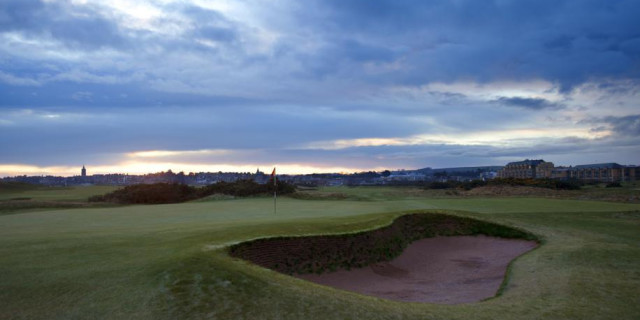
Duke's, St Andrews
7,512 yards, park 71, parkland
Green fee £95
Think of St Andrews and images of classic links golf come to mind, but the Duke's Course owes more to parkland, with plenty of trees lining the fairways. The course opens with a 528-yard par five. From the tee, the fairway bunker on the left side of the fairway is the best line. It provides a great angle to lay up on the right side, which opens up the approach to the green. The approach is well protected by bunker complexes short right and greenside left. The eighth hole is a brute of a par three measuring 250 yards. It plays even longer than its length because it is uphill. To add to the difficulty, you need to leave yourself an uphill putt is vitally important, as anything long or to the side leaves you with a very delicate shot. The 12th is another great par three. It measures 224 yards and, again, is played to an elevated green with a false front.A bunker short centre creates an illusion that the green is closer than it is. The 17th is a wonderful 428-yard par four. You drive between two mature oak trees. There is water on the right and long grass on the left, with the approach played a long and narrow green.
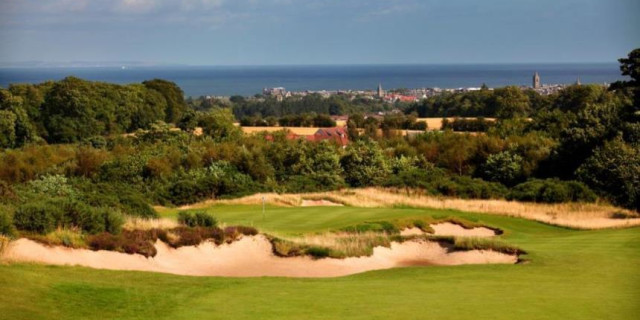
Drumoig
6,956 yards, par 73, parkland
Green fee £20
Drumoig is a challenging championship course set in 250 acres of spectacular Fife countryside, which weaves through a natural bird and wildlife haven. It features a lot of water - come off the 18th green with the same ball you started with and you can give yourself a well deserved pat on the back. Drumoig features a wonderful run of holes from the ninth to the 11th where water comes into play. The ninth is a fantastic par four measuring 439 yards. There is not a fairway bunker to be seen but plenty of trouble awaits any drive that drifts right. The hole plays gently downhill with a large lake to the left and a pond to the right. The approach needs to be hit over the lake to a small putting surface - anything left will find a watery grave. The 10th hole is a magnificent risk-and-reward par four that measures just 288 yard. The lake comes into play again - you need to carry the water to find a narrow fairway, and the choice is a stark one. Do you go for the green with a driver or do you take a mid iron from the tee? Go left or long with the driver and you will find the water. There is also a small tree on the right to be avoided. The 11th is a breathtaking par three measuring 172 yards. It is played over water to a small green guarded by deep bunkers left and right. And yet again, anything slightly left will be disappearing into the water.
Balcomie, Crail
5,861 yards, par 69, links
Green fee £69
Balcomie was designed by Tom Morris and opened in 1895, and it is a classic Scottish links course. The first hole features an opening drive from the top of a cliff to the fairway below. Your approach is a blind shot played over a bunker and a turf wall to a well-guarded green with a burn beyond. The fifth, a 447 yard par four, is appropriately named Hell's hole. It provides a great risk-and-reward challenge - cutt off the out of bounds over the rocky bay on the right and the green is in reach, or play safe and accept that a third shot to the green is inevitable. The 13th is a 210-yard par three. it is played up and over a vertical cliff to a blind, sloping green and, more often than not, the wind is an added hindrance. It is followed by another par three regarded as one of Scottish golf's most scenic holes. It is played from the top of the cliff to a green far below surrounded by bunkers, with an out of bounds beach to the right and fronted by an enormous sleeper-faced bunker.
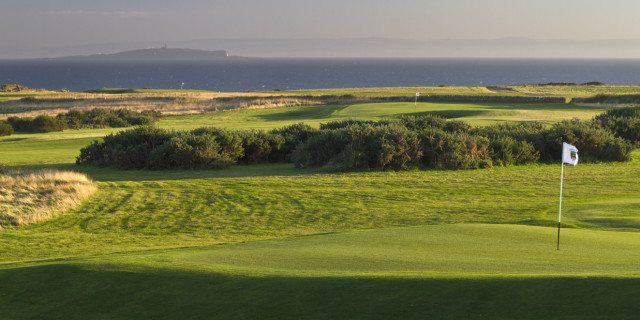
Balbirnie Park
6,313 yards, par 71, parkland
Green fee £50
Balbirnie originally opened as a nine-hole course in 1905. Much of it was damaged during the second world war and it eventually folded in 1947. The first nine holes reopened in 1983 and it was extended to a full 18 holes the following year. The first is 398 yards long and is a challenging dogleg. The ideal tee shot it a long draw around the tree line, but don't go too far left. The two-tiered green is well guarded by two large bunkers. The ninth measures 380 yards and affords golfers a beautiful view of the estate. It appears straightforward enough, but the fairway is guarded on both sides by substantial trees. The approach is to a well protected green. The 465-yard 12th is the best hole on the course, featuring trees and water to the right of the green. The drive has to be hit through an avenue of trees and avoid a large bunker on the left followed by a lengthy second to a green protected by a pond on the right. The closing hole, which runs to 495 yards, is a beauty and offers the opportunity of finishing with a birdie. The hole plays downhill but the key is to miss two deep bunkers to the left of the fairway. If you get a good drive away you then have to decide whether or not to go for the green but there is no margin for error as a stream runs in front of the green, with a bunker eating into the right side.
Related Content:
What do you think? post your thoughts and feedback on the Golfshake Forum: https://forum.golfshake.com/



